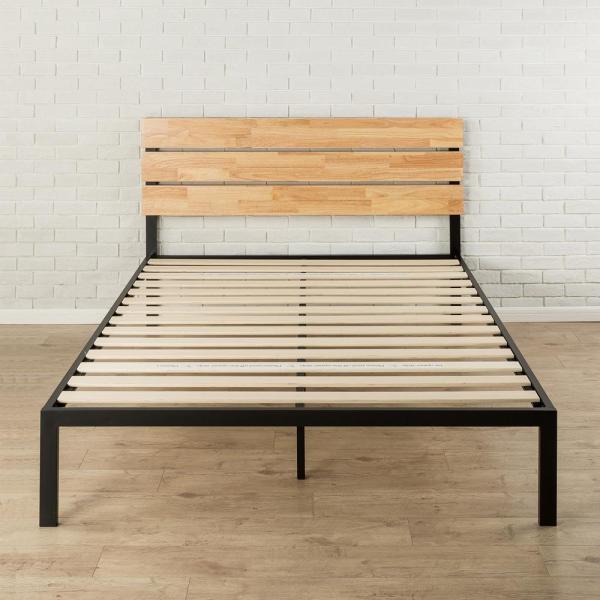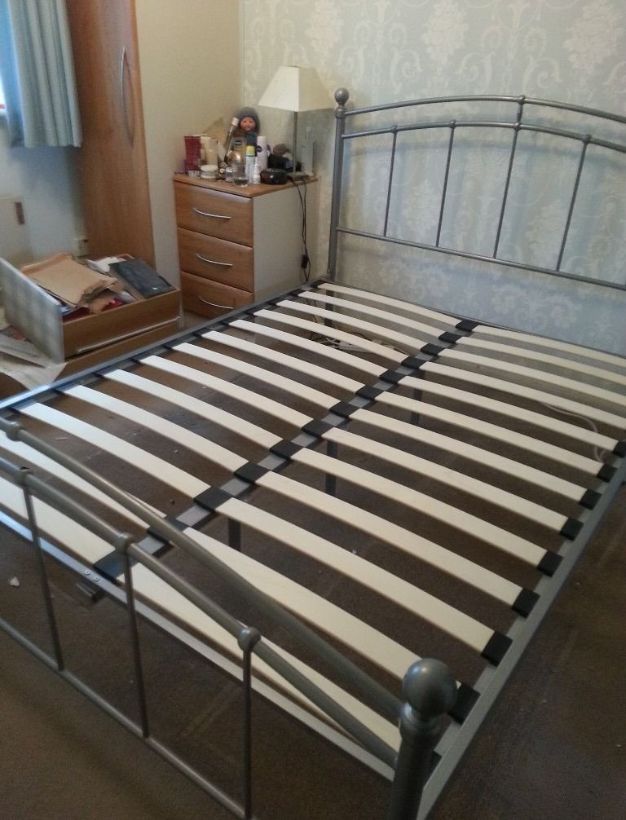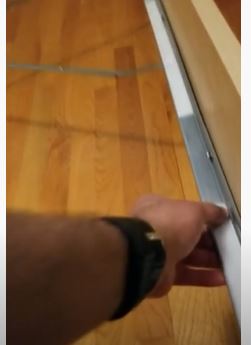Bed slats refer to a series of long connected bars usually made of aligned solid wood or metal to form a base that supports the mattress on a bed. The bars stretch across the bed frame from one hook-on rail to the other and work together with the mattress to provide support. The slats are spaced either 2’’ or 3’’ apart to provide even distribution of a sleeper’s body weight and prevent sinking.
For those who haven’t seen a bed slat, it is something that looks like a ladder that prevents mattress from sinking inside the bed.
When not fitted properly, bed slats can cause squeaking and lead to some discomfort when sleeping. Beds can have either wooden or metallic slats.
What are Bed Slats Made of?
Bed slats are made of either wood or steel. They are made of strong wood including pine and beech are usually used to make the bars that lie across the bed frame to support your weight. Similarly, many people use steel slats to provide support for mattresses because they are way cheaper and simple to make.
Today, the most common material used to make slats are pine wood.
At the same time, plywood slats are also usually common because they allow better air circulation compare to plywood sheets.
The design of the bed slat can determine how long your mattress will last.
Considering that some are bowed up while others down, it all comes down to individual preferences. However, their ability to allow your mattress to breathe matters.
Should Bed Slats be Bowed up or Down?
Bed slats can be bowed up or curved down depending on your preference. Some slats are also straight but they should all allow free air circulation for your mattress when you lie on the bed. Steel bed slats bowed up will be uncomfortable almost always and thus not recommended.
Others are designed such that they will curve down when you sleep on them but then bow up once you get out of bed.
Are Wooden Bed Slats Sturdy?
Yes, wooden bed slats are sturdy just like steel although there might be variations on maximum weight supported depending on the type of wood. If it is made out of timber, the bed slat will serve as a perfect platform for your mattress.
Even when they are thinner, the bed slats will still support even the heaviest sleepers. The maximum weight these slats can hold is 500 lb for a full-size bed frame and about 600 lb for queen size bed.
In the long run, wooden bed slats may lose stability and comfort after a while.
Some wooden slats may be thinner. Excess weight over 400 pounds is likely to break some of the bed slats as too much pressure can only be sustained by steel.
Sprung Bed Slats Problems?
Straps are curved upward and act as a spring. They fold when you lie on them and rise back up when you’re out of bed.
- The main problems of sprung slats include the common dips that appear on the mattress, unlike solid slats.
- Finding a nice sprung slat is one of the major challenges.
- It is difficult to find the right replacement for your bed size and frame.
- People also report that sprung slats could slide off more frequently than solid slats.
Benefits of Sprung Slats
- The flexible beech wood used to make sprung slats also introduces a slight curve that may be uncomfortable for people who weigh less.
- In most cases, sprung slats are beneficial to provide better quality because they are better spaced than rigid ones.
- Sprung slats also minimize strain on the mattress which makes it last longer than the other types of slats.
Types of Bed Slats
There are two types of slats. They are identified based on how they fit on the bed and how much support they offer. The two types include:
- Solid slats
- Sprung slats
Solid Slats
Solid slats are usually made of wood, for instance, pine, and run across the width of the bed from the left to the right hook-on rail.
Their alignment across the bed creates a very firm and more supportive bed.
There is no standardization for the type of wood used to build solid slats.

For those who prefer firmed beds, the best bed slat is a solid slat. Their overall feel is sturdy and when paired with a firm mattress, you can be sure of a peaceful night sleep.
Sprung Slats
Sprung slats are bed slats made from flexible beech wood and have a slightly curved appearance. The purpose of this arched shape is to minimize strain of the mattress. With reduced strain, one can expect their mattress to have a relatively longer lifespan.

This design enables sprung slats to respond to the sleeper’s body weight and relieve pressure points.
Those who prefer a little more flexibility rather than a really firm bed should consider having sprung slats paired with medium-feel mattress.
Sprung slats can be made of different materials. The four common ones include:
- Wood
- Fabric
- Metal
- Leather
How wide should the gap between slats be?
Although the gap between bed slats vary tremendously, the recommended size should not exceed 2.8 inches (7 cm). Having a gap which is wider that this can speed up the rate of wear and tear to your mattress.
Other mattress companies such as Dunlopillo recommend that people acquire beds that have less than 2.4 inches (6cm) wide bed slats.
Differences between solid slats and sprung slats
The easiest way to identify these two types of bed slats is to look at their structure.
Based on the description we have provided, a number of differences are noticeable. Below are some of the most significant ones.
| Solid Slats | Sprung Slats |
| One full row of slats lies across the width of the bed | Two rows of slats lie across the width of the bed |
| Reinforced with an additional support bar in the middle | A center support rail connects the slats at the middle of the bed |
| Straight, solid and sturdier | Curve upwards and responsive to mattress and body weight |
Buying Bed Slats
A major downside to buying a bed slat is that the buyer is counting on a one-size-fit-all product installation. Despite bed slats being made to fit most bed like a universal item, they do not always fit all beds perfectly.
In few instances, you might end up with a smaller and less than ideal size of a bed slat. Other times, the bed slat could be wider than the bed forcing you to cut some of its edges down to size.
Another problem that I have heard from tall people is the height of the bed. Bed slats takes a few inches of your bed by lowering the mattress.
As the mattress sits lower and closer to the ground, very tall people find bed slats a source of some little discomfort.
When slats are falling off the rails
Sprung slats are known for this problem where they slip off the rail leading to some sagging on the mattress. That happens because the slats slide inwards leaving the end to fall off the rails.
Here is a simple solution to fix that problem.
1. Since the idea is to keep the slats in place, find some Velcro strips, hooks and loops with adhesive backing.
2. Put the loops along the edge of the rails on both sides.

3. On the center beam, put the strip across the width of the bar.
3. Cut the hook spot of the Velcro onto the little strips. Fix each of them to the edges of the slats.

These simple steps will make sure that your spring slats stay in place regardless of the weight on top of the bed.
Alternatives to Bed Slats
I know that for some people, bed slats are not their cup of tea. If that is the case, the alternative is to get box springs.
Check out our article on box springs below.

